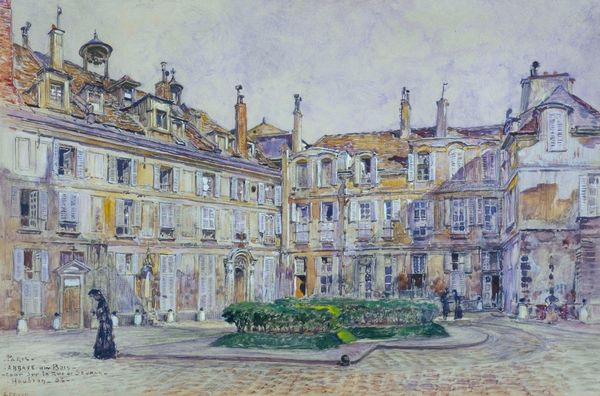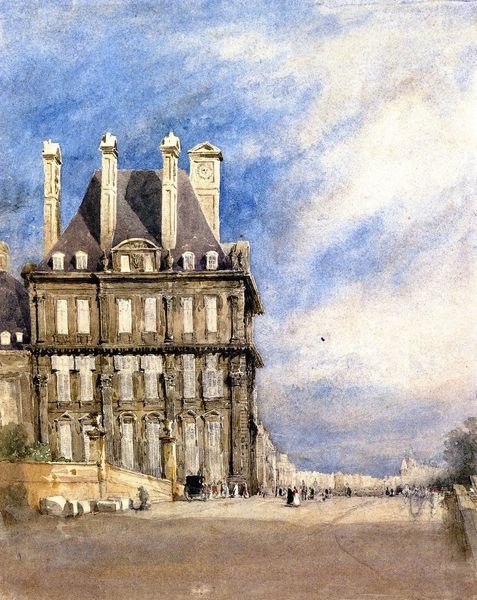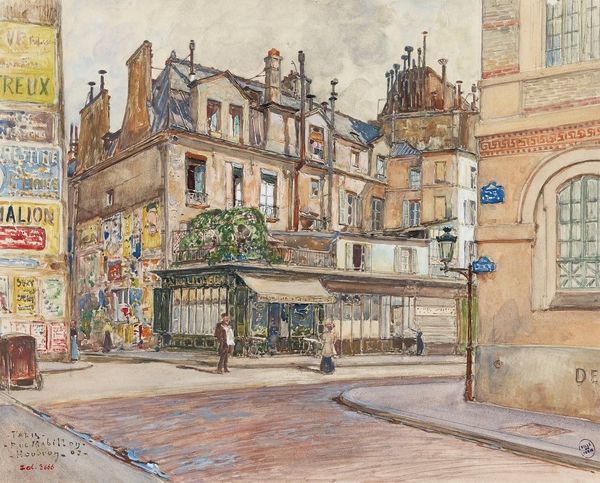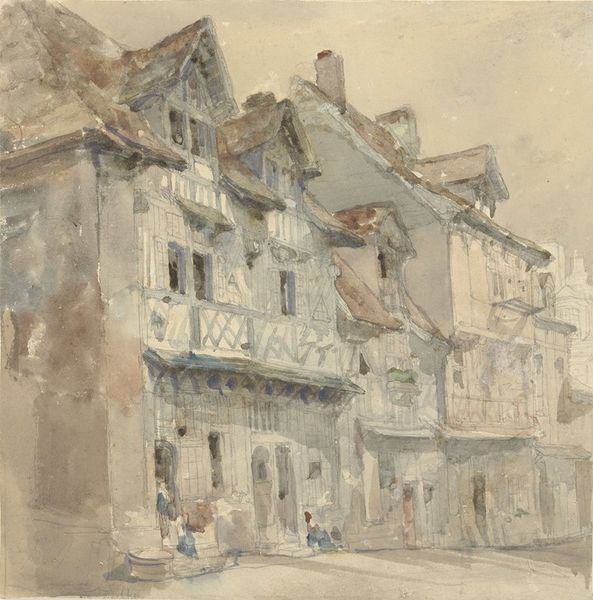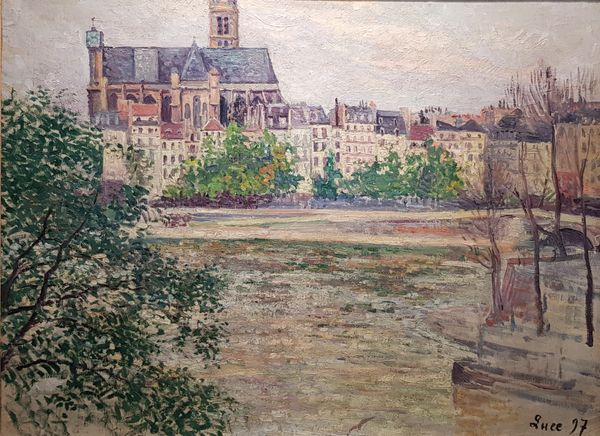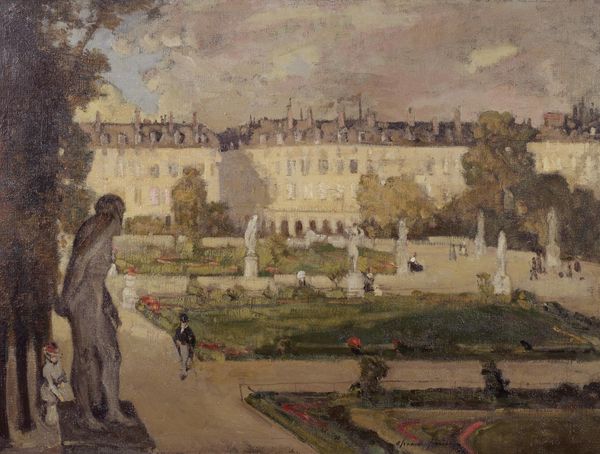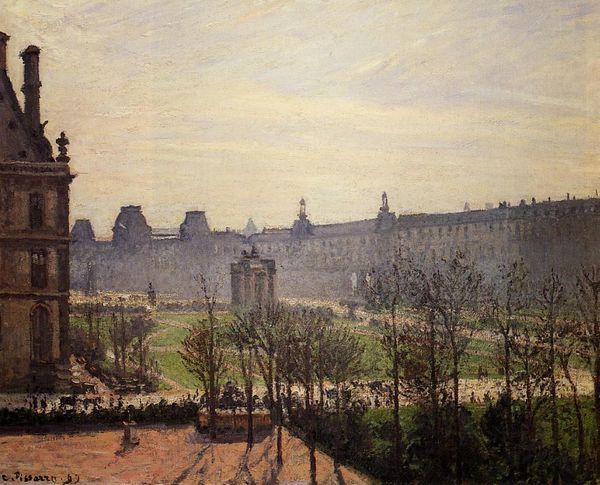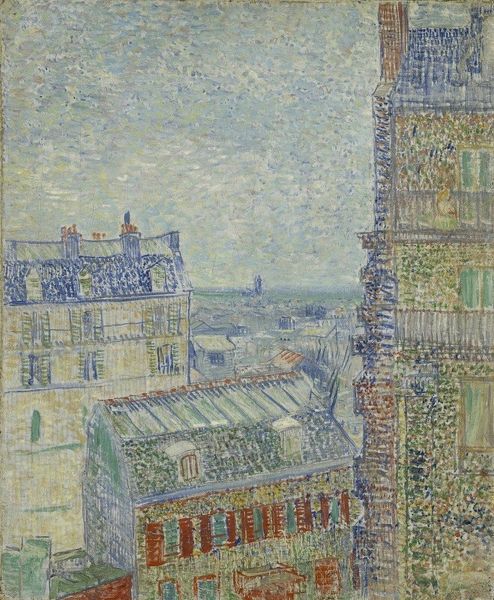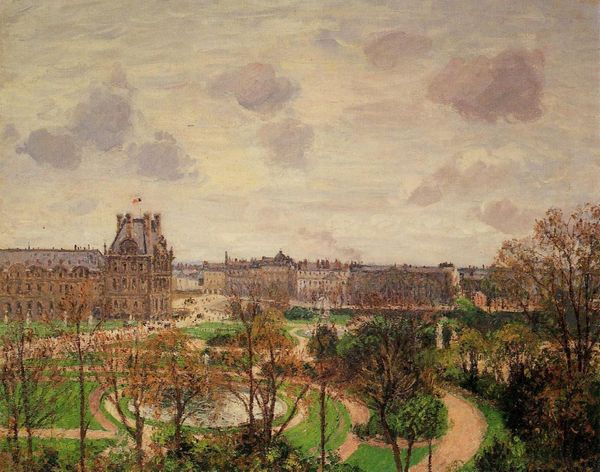
Copyright: Public Domain: Artvee
Curator: This artwork, created by Frédéric Houbron in 1906, is entitled "Le cloître de l’Abbaye-aux-Bois, rue de Sèvres." It's a compelling cityscape rendered with evident impressionistic influences. Editor: My immediate reaction is a sense of faded grandeur. The light, filtered through the courtyard, lends a melancholic air to the architecture, and this palette suggests that we’re perhaps meant to find value in decay. Curator: Absolutely. We can read the layering of watercolor as more than a simple depiction, but perhaps an articulation of historical palimpsest. Consider the architectural composition; the verticality of the building against the enclosed space hints at a stratified society. The nuns subtly engage within it, marking its role. Editor: I find it fascinating how Houbron uses the loose brushwork to create an atmosphere of quiet observation. It seems to position us, the viewer, as discreet onlookers into the lives of these cloistered women and the daily rhythm of their lives within the Abbey. There is a definite push/pull with the muted color—how much must we the viewers glean and construct on our own versus a painting that plainly illustrates the everyday for us? Curator: I see your point about quiet observation; from a formal perspective, the semi-circular rhythm established through the rounded windows introduces an almost musical structure. It draws the eye across the horizontal axis. That symmetry then implies a societal structure, echoing a controlled and repetitive existence. Editor: I agree that the cloister clearly suggests a contained world and lifestyle; one can assume some sort of self reflection due to it’s isolation. However, consider how these buildings exist in a busy and loud world; for one reason or another, the people within those walls elected a more peaceful life than the rest of society. I don’t see the architecture in that manner but rather it’s role for an order, society and way of life. Curator: The historical role of the Abbey itself reinforces that reading of internal lives set aside. What remains in my reading of the painting overall is a composition constructed through light and material, subtly coded with societal expectations through a cloistered visual vocabulary. Editor: Well, I will leave here with an urge to know how Houbron himself interacted and felt about these Abbeye folk. What sort of emotionality and feeling towards them did Houbron possess as he so aptly captured their architectural and societal dwelling on the Sèvre Street.
Comments
No comments
Be the first to comment and join the conversation on the ultimate creative platform.
